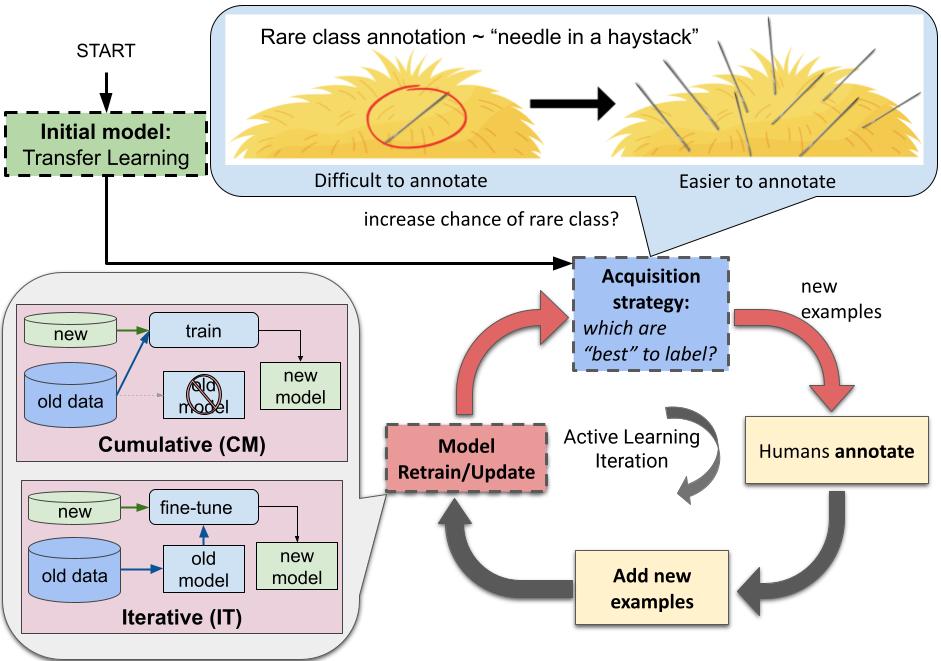Transfer and Active Learning for Dissonance Detection: Addressing the Rare-Class Challenge
While transformer-based systems have enabled greater accuracies with fewer training examples, data acquisition obstacles still persist for rare-class tasks -- when the class label is very infrequent (e.g. < 5% of samples). Active learning has in general been proposed to alleviate such challenges, but choice of selection strategy, the criteria by which rare-class examples are chosen, has not been systematically evaluated. Further, transformers enable iterative transfer-learning approaches. We propose and investigate transfer- and active learning solutions to the rare class problem of dissonance detection through utilizing models trained on closely related tasks and the evaluation of acquisition strategies, including a proposed probability-of-rare-class (PRC) approach. We perform these experiments for a specific rare class problem: collecting language samples of cognitive dissonance from social media. We find that PRC is a simple and effective strategy to guide annotations and ultimately improve model accuracy while transfer-learning in a specific order can improve the cold-start performance of the learner but does not benefit iterations of active learning.
PDF AbstractDatasets
Introduced in the Paper:
Dissonance Twitter Dataset


